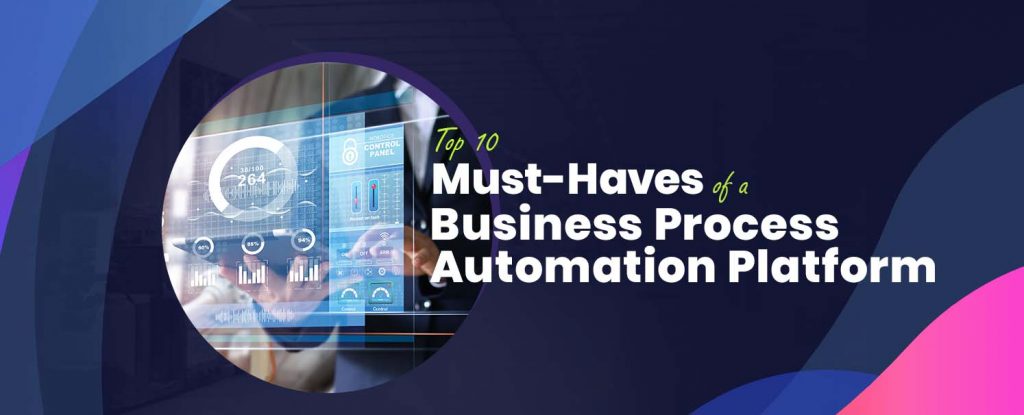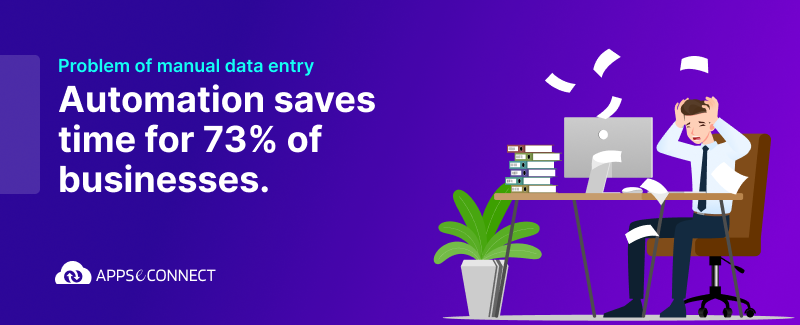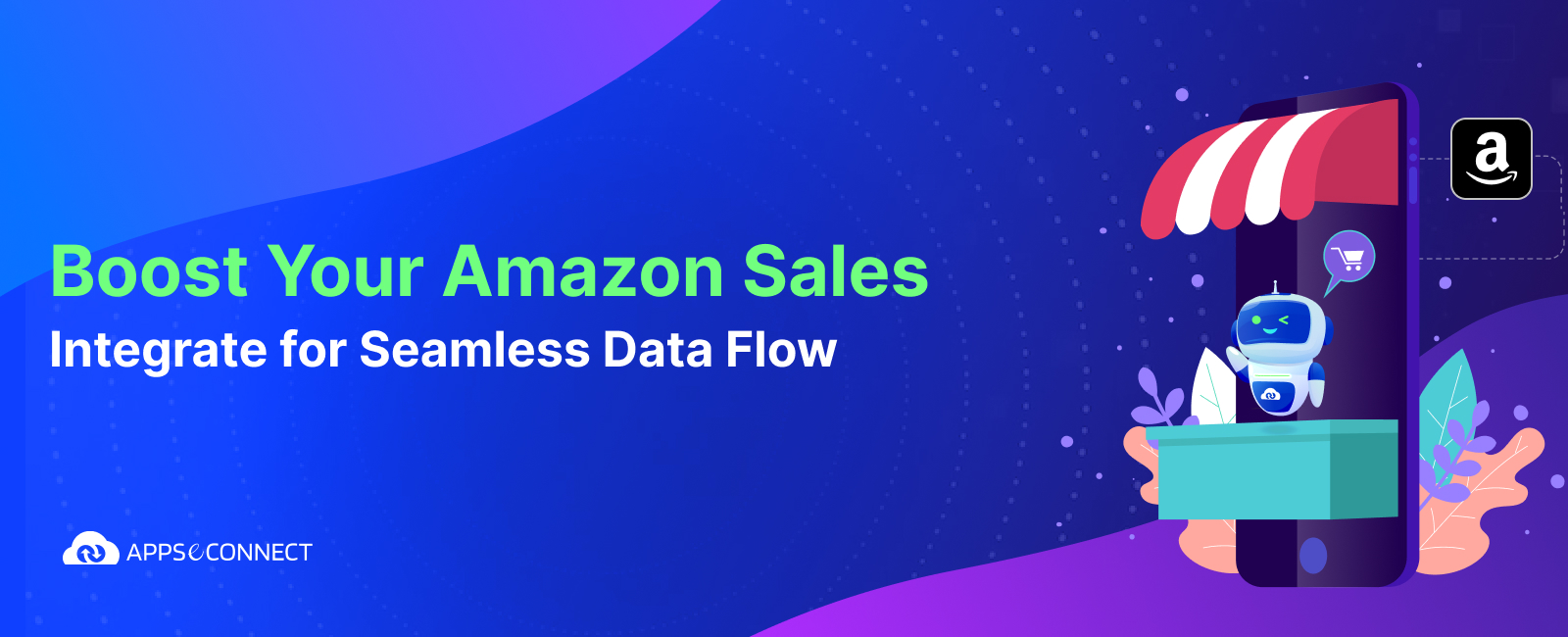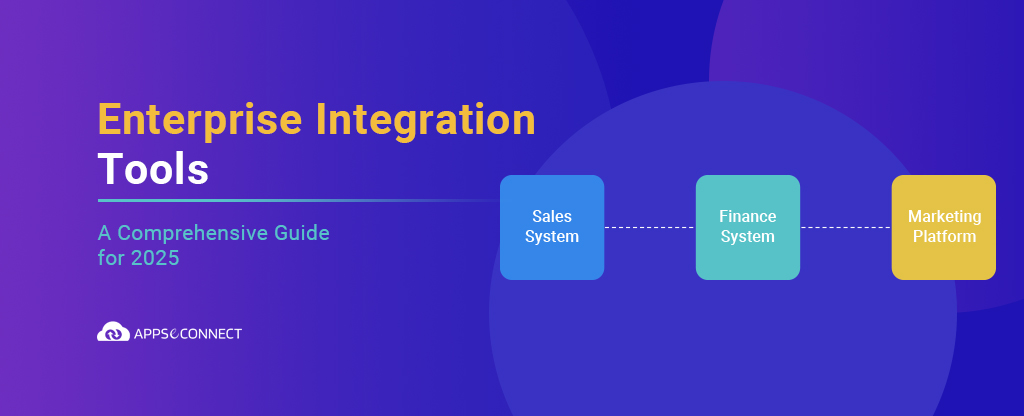In the current digital era we live in, businesses are no longer a collective of people working together to generate revenue but a complex network of business processes running simultaneously to manage the functioning of an organization. Individually managing all these processes is a logistical nightmare. So, to enable effortless and streamlined management of these processes, a robust next-gen Business Process Automation platform is needed.
BPA is the process of automating complex business processes and functions across an organization through advanced technology solutions. The automation not only manages conventional data manipulation and record-keeping activities but also integrates applications to automate repetitive tasks.
To learn more in detail about the capabilities of a BPA, check out the following Business Process Automation whitepaper:
Download the whitepaper to know more about Business Process Automation
The Challenges of Integration
Integrating the myriad of business applications and the vast amount of data they generate is no easy task. The difficulties of integrating such vast volumes of data come down to five fundamental challenges.
Data is not available at the desired location
The different departments of a modern business do not operate in isolation. Data generated by the organization needs to be accessed centrally by each department to make proper strategic planning. Without a centralized common source of data, the different departments cannot access it when they need it. So, one of the primary challenges data integration faces is to provide a centralized platform for data accessibility.
Data is not available at the required time
Following up on the previous point, the data also needs to be made available in real-time to the different departments. Manually updating the data across the departments is a very time-consuming undertaking and often leads to the departments not having access to the latest data when necessary. Thus, the integration tool must have the capacity to share and update data across the entire infrastructure in real-time.
The data format is incorrect
The different business applications used by an organization often have their own unique data formats. Data formats that are incoherent need to be formatted and validated. Manually formatting and validating the data is a time-consuming process. Thus, the integration tool must have the functionality to overcome the challenge of homogenizing all the different data formats into a singular format for universal accessibility. The automation tool must have the capability to analyze the base language of the data, determine the needed format language and automatically make the change.
Data quality is poor
Poor data quality is one of the leading causes of revenue losses for businesses across the globe. That is why having appropriate data is necessary for driving innovations, staying compliant, and making effective business strategies. To maintain accurate data across the system, the automation tool needs to validate the data as soon as it is ingested into the system and thus, reduce the amount of bad data entering the database.
Presence of redundant data
Redundant or duplicate data can cause several issues within a company. From multiple data entries for a singular customer leading to inaccurate behavior analysis to lack of business efficiency, redundant data disrupts every step of a business process. To reduce cases of data duplication, the automation tool needs to validate all incoming data and create a singular unified source of information.
Taking the above points into consideration, a BPA solution needs to have a suite of robust features to efficiently enable process automation and help a business grow. With this in mind, the following are the top features a Business Process Automation (BPA) Platform needs to have to provide streamlined automation and help a business grow.
If you have multiple systems running in your business, connect all of them under one single platform to automate the business process and improve your productivity and efficiency!
Top 10 Must-Haves of a Business Process Automation (BPA) Platform
A BPA platform is a versatile tool that caters to multiple industries like Healthcare, Manufacturing, Banking and Finance, and many more industries. A BPA may have a variety of capabilities, there are some core must-have features that make a solution great. Those are:
Robust data security protocols
Data breaches are one of the biggest growing concerns of the industry. According to IBM, data breaches amounted to more than USD 4.24 million, the highest average total cost in the 17-years. Since a BPA solution will be operating with most of the data the company generates, it needs to have a suite of robust security protocols to guard against data breaches. An unbreachable data security infrastructure safeguards against hackers stealing valuable data, cyber-attacks that can damage IT infrastructure, and corporate espionage.
Real-time data integration
Over the past years, companies have implemented several solutions to manage their business. These applications generate immense amounts of data that can be difficult to view from a unified perspective. A real-time integration tool allows organizations to analyze, interpret and visualize the data when it is created or when changes are being made to it. A BPA solution that provides real-time data integration enables the organization to increase business agility, quickly detect and address operational issues, rapidly act upon short-term trend changes, improve customer experience with up-to-date customer behavior data, and much more.
Compatibility with multiple data format
A Business Process Automation platform needs to be compatible with multiple data languages to be effective. With the diverse types of data formats used by the myriad of business applications used within an organization, the BPA tool needs to have the capability to interpret and validate all the different data formats. Having compatibility with multiple data formats enables the BPA solution to create a unified data format to be used across the entire IT infrastructure. The unified data format helps the separate applications to transfer error-free data and communicate with each other seamlessly.
Real-time process performance metrics
A BPA solution that does not provide real-time analytics on business processes is just a workflow application. The BPA tool should provide accurate real-time analytics of crucial business processes such as data of all active tasks, the status of an operation, how long it takes to complete a given function, etc. The analytics needs to be presented in an intuitive centralized dashboard to allow the user to gain valuable insights at a glance, monitor business performance, and identify bottlenecks within a process. The BPA solution should also provide the user with the options to create custom charts and reports, download them and carry out analysis as required.
Integration capability with other systems
Modern businesses have several software systems implemented within their operation workflow. The BPA solution needs to have adapters to communicate with the existing IT infrastructure along with provisions to integrate with other 3rd party solutions the company may choose to implement. Without the capacity to integrate with other systems, data would have to be manually transferred across the system to complete a process, defeating the entire purpose of a BPA solution. End-to-end integration of the BPA solution with the system can be achieved through REST APIs, built-in connector sets, secure FTPs, and other such standard protocols.
Low-Code GUI-based \ API-based implementation environment
Since most organizations may not have a dedicated system development team available around the clock, a Low-Code Graphical User Interface-based implementation environment for a BPA solution becomes necessary. With a Low-Code and intuitive Visual Integration Builder, any user can graphically create, view, and change the data flow for a process. It also allows for rapid development and deployment of changes to an existing process easily from anywhere.
Options for Cloud, On-Premises, or Hybrid deployment
An organization’s IT infrastructure may be On-Premises, in the Cloud, or as a Hybrid of both. With each organization having its own unique infrastructure, the BPA solution should be compatible with all infrastructure. Moreover, the solution should be flexible to changes in infrastructure. The BPA solution should offer both on-premises and cloud deployment with the flexibility to transition between the two. Flexible deployment capabilities reduce the cost of redeploying the BPA solution in case the organization decides to change its IT infrastructure model.
Role-based Access Control
A BPA solution should have a robust suite of administrator functionalities. If the data forms and fields are sensitive, the administrator should have the ability to define access levels. The administrator should be able to display only the required fields to the necessary user while restricting access to more high-level sensitive databases. Having Role-based access control reduces paperwork and password changes when a new user is added to the system or has their roles changed. Through Role-based access control, the system administrator can add and switch roles quickly and implement them across the system. Having a BPA solution that enables the system administrator to create multiple users and assign specific roles also streamlines the workflow.
Pre-built connectors for standard applications
While most BPA solutions will provide users with the capability to develop custom application connectors, having a set of pre-built connectors out of the box reduces the time and cost for deployment significantly. Most organizations use industry-standard applications to run and manage their business operations. Having a process automation tool that comes pre-packaged with connectors for these standard applications allows easier delivery and optimized data communication between the business applications, enabling quicker streamlined integration.
Automated data tracking and error management
With the vast amounts of data managed through a BPA solution, the platform needs to continuously track and monitor all the data. A BPA tool with real-time data tracking and error management allows the users to get a unified to filter errors and focus only on the issues faced by the process. The error management tools should provide detailed report generation capabilities for future reference for similar scenarios.
APPSeCONNECT – The Robust BPA Solution Your Business Needs.
Finding a robust Business Process Automation that has all these features packed into it can be a challenging task, but we have you covered. APPSeCONNECT is the intelligent BPA solution that your business needs. It comes with all these features and even more.
APPSeCONNECT’s unique visual process automation management tool called ProcessFlow is a wizard-based designer that enables users to graphically create, view, and change the data flow for a process, enabling effortless and rapid deployment of integrations. It also comes with built-in connector templates and protocol-based adapters that allow for rapid deployment of integration with standard business applications along with effortless integration with other applications through standard protocols like FTP/Secure FTP, SOAP, REST, and SMTP.
The platform also comes with a suite of robust security features that ensures your business is never compromised. The solution does not upload credentials or share any sensitive business data to the cloud servers, ensuring your data stays secure on your premises. Any configuration data downloaded from the server also passes through a network of complex encryption channels, allowing for end-to-end data security.
These are just the tip of the iceberg. To know in more detail about all the features APPSeCONNECT can provide to your company to make it grow, head on to: https://www.appseconnect.com/features/
Conclusion
Manually managing all the processes of a business is a nightmare. A BPA solution is what you need to automate and streamline your business processes and get a clear view of how your business is performing. With a robust BPA like APPSeCONNECT that provides a suite of power integration tools, now you can connect everything!
Download the whitepaper to know more about Business Process Automation
APPSeCONNECT is an enterprise-grade integration platform that connects SaaS, on-premise applications, data and technologies under one single platform. It offers pre-built solutions (a set of ready-to-use ProcessFlow templates) for widely used areas of business integration processes and supports all major applications available in the market. Its hybrid architecture allows organizations to integrate cloud applications as well as on-premise systems and create custom business process integrations. Request a free trial today to kickstart business process automation with APPSeCONNECT.
If you have multiple systems running in your business, connect all of them under one single platform to automate the business process and improve your productivity and efficiency!






















